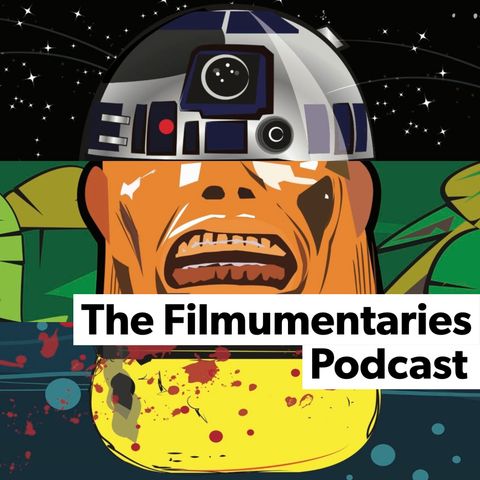7 OCT. 2024 · In this episode, I sat down with Jon Spira to dive deep into the making of his latest documentary, The Life and Deaths of Christopher Lee. If you’re a regular listener, you know Jon’s been on the podcast a couple of times before, and it’s always a treat to hear him talk about his work.
This time around, he takes us through the journey of bringing Christopher Lee’s story to life—literally.Jon kicked things off by sharing what drew him to this project in the first place. Inspired by a mix of fascination and intrigue, he became captivated by Lee's enigmatic presence, especially after rewatching a rather unusual "This Is Your Life episode" featuring Lee. Jon’s documentary doesn't just skim over Lee’s storied career, from Hammer Horror to The Lord of the Rings, but it digs into the emotional layers of a man who, despite his towering on-screen persona, was often plagued by self-doubt and a desire to control how the world perceived him.
We spent a good amount of time talking about the challenges Jon faced in portraying someone as multifaceted as Christopher Lee. It’s no small feat to condense a career that spanned over six decades into a single film. Jon wanted to avoid the usual biographical pitfalls—just ticking off achievements and movie titles—and instead aimed for something more intimate and emotionally resonant. He wanted viewers to come away with a sense of who Christopher Lee really was, beyond just the roles he played.
One of the more fascinating parts of our conversation was Jon’s decision to use a marionette puppet to represent Lee. It was an unconventional choice, but as Jon explained, it made perfect sense for a subject who was so concerned with how his story was told. He originally toyed with the idea of CGI but felt that it lacked the emotional warmth he was looking for. So, he collaborated with Andy Gent, known for his work with Wes Anderson and Tim Burton, to create a beautifully crafted puppet of Lee. And who better to provide the voice than Peter Serafinowicz, whose deep, rich tones helped bring that puppet to life. Jon’s approach allowed Lee to narrate his own story, with other voices occasionally chiming in to add a touch of warmth and gentle contradiction. It’s this kind of creative storytelling that sets Jon’s work apart—finding new ways to tell familiar stories.Jon and I also delved into some of the broader challenges facing filmmakers today.
The industry is in a strange place right now, with budgets tightening, streamers changing their strategies, and the rise of new technologies like AI reshaping the landscape. We had a lively discussion about the role of AI in filmmaking. For one specific sequence in the film—recounting a moment when Christopher Lee witnessed the last public execution by guillotine in France—Jon’s team used AI-assisted animation to breathe life into archival photos. It’s a decision that has sparked some controversy, especially from certain corners of the American press, but Jon sees it as just another tool in the creative toolkit.
He acknowledges the fears around AI and the impact it might have on jobs, but he also believes that, when used thoughtfully, it can elevate storytelling in new and exciting ways.Throughout our conversation, a recurring theme was empathy—something that Jon clearly values in his approach to documentary storytelling. He talked about how he always aims to create a sense of connection between the audience and his subjects, to show their humanity in all its complexity.
For Jon, it’s not just about documenting facts; it’s about exploring how those facts feel, and how they shape the person behind the public image. In The Life and Deaths of Christopher Lee, this approach results in a film that isn’t just a tribute to a cinematic legend but also a portrait of a man grappling with his own insecurities, just like the rest of us.
We also touched on the state of cinema today—how trends are shifting, the uncertain future of theatrical releases, and what that means for filmmakers who, like Jon, are passionate about telling unique, challenging stories. It’s clear that Jon sees the current moment as both a challenge and an opportunity—a chance to push boundaries and keep audiences engaged in new ways, even if it means embracing some unconventional methods along the way.All in all, our chat was a rich, multi-layered conversation, touching on everything from the intricacies of puppetry to the big questions about where the film industry is headed. It’s a must-listen for anyone interested in the art of documentary filmmaking, the evolving landscape of cinema, and the enduring allure of a complex, larger-than-life figure like Christopher Lee.


